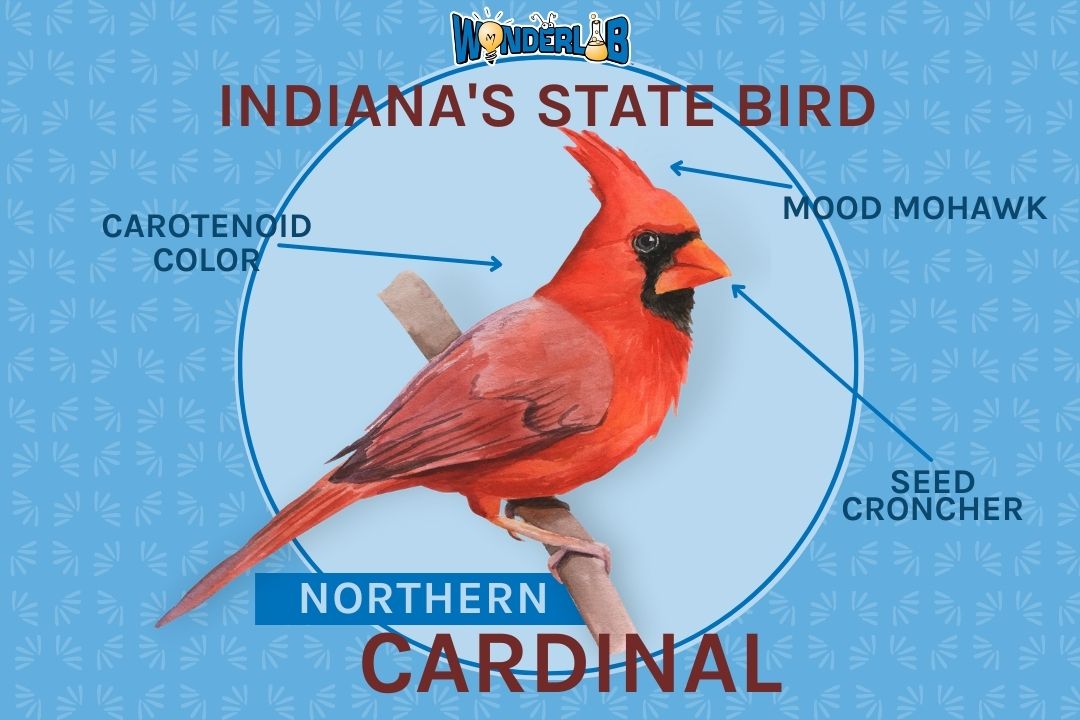
You’re probably familiar with the Northern Cardinal. They’re hard to miss and harder to resist! These beautiful birds can be found all across the south and eastern United States. They are permanent residents which means they don’t migrate south during the cold winter months like many other birds. Keep your eye out and you might spot their bright red plumage on a snowy, winter day.
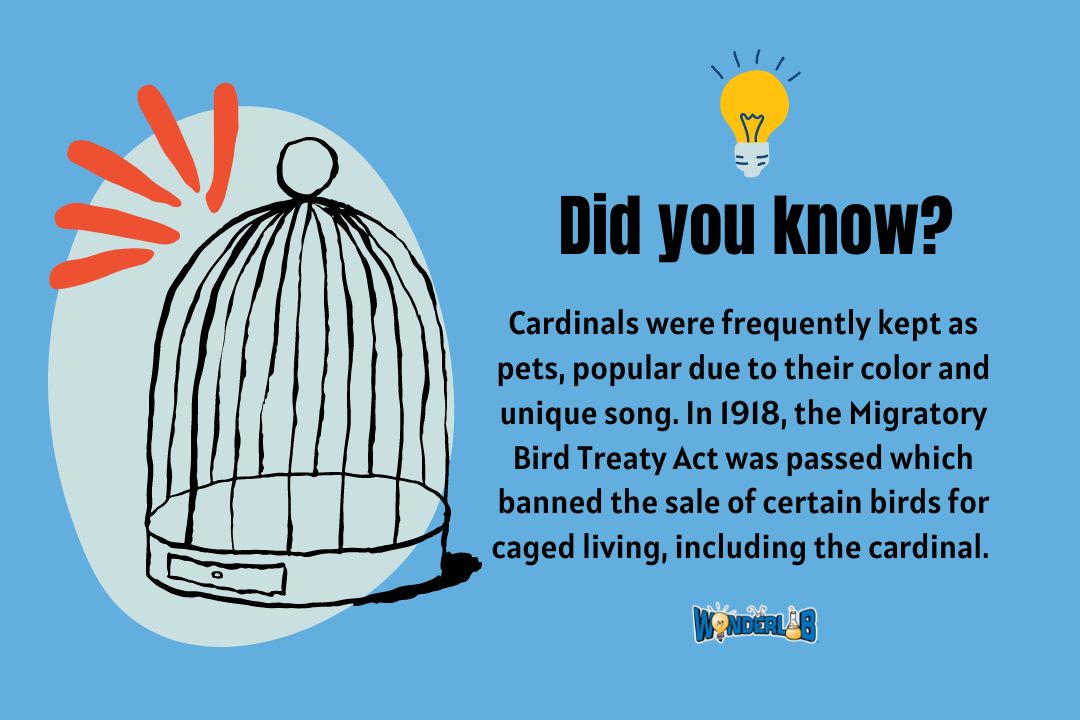
Carotenoid Color
What makes a Cardinal red? There are three important chemicals that determine Northern Cardinals’ coloring. Melanin gives them their black, brown, and buff colors (this is what determines humans’ coloring too!). Porphyrin gives them reddish and brownish shades. But Carotenoids are the true hero. These create the vibrant yellow, orange, and red colors that are quintessential to the classic look of the male Cardinal we all know so well.
Cardinals find carotenoids in their diet. In fact, when they do not have access to carotenoid rich foods, they lose much of their vibrancy. Carotenoids can be found in fruits and berries. Favorite treats amongst Cardinals are wild grapes, raspberries, or dogwood berries.
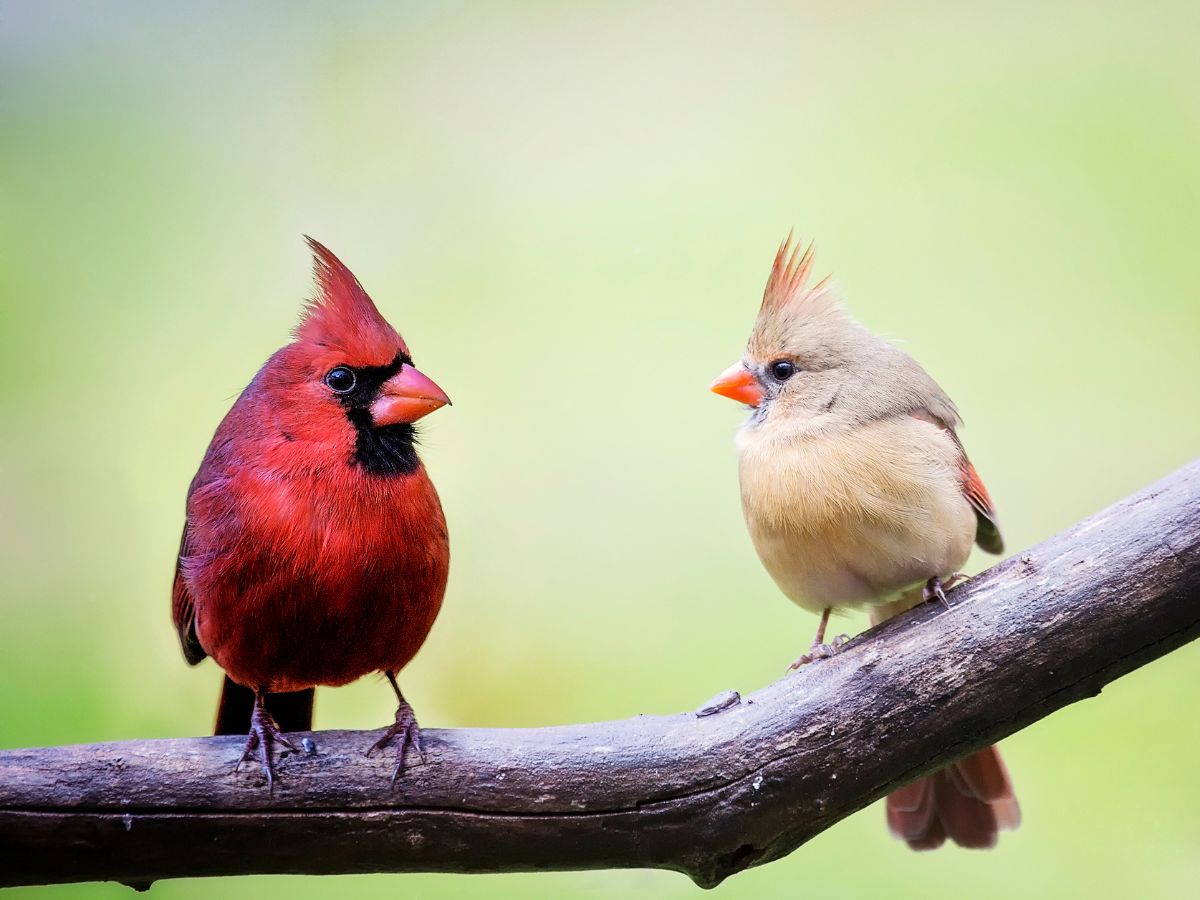
The brilliant red color that makes Cardinals so popular amongst humans, also determines popularity amongst cardinals! The bright color of the males functions as a mating strategy. Whereas male Cardinals are a brilliant red, female Cardinal’s coloring is more gray and muted (though they too have subtle red through their plumes). The redder the male, the higher their success rate in attracting female mates.
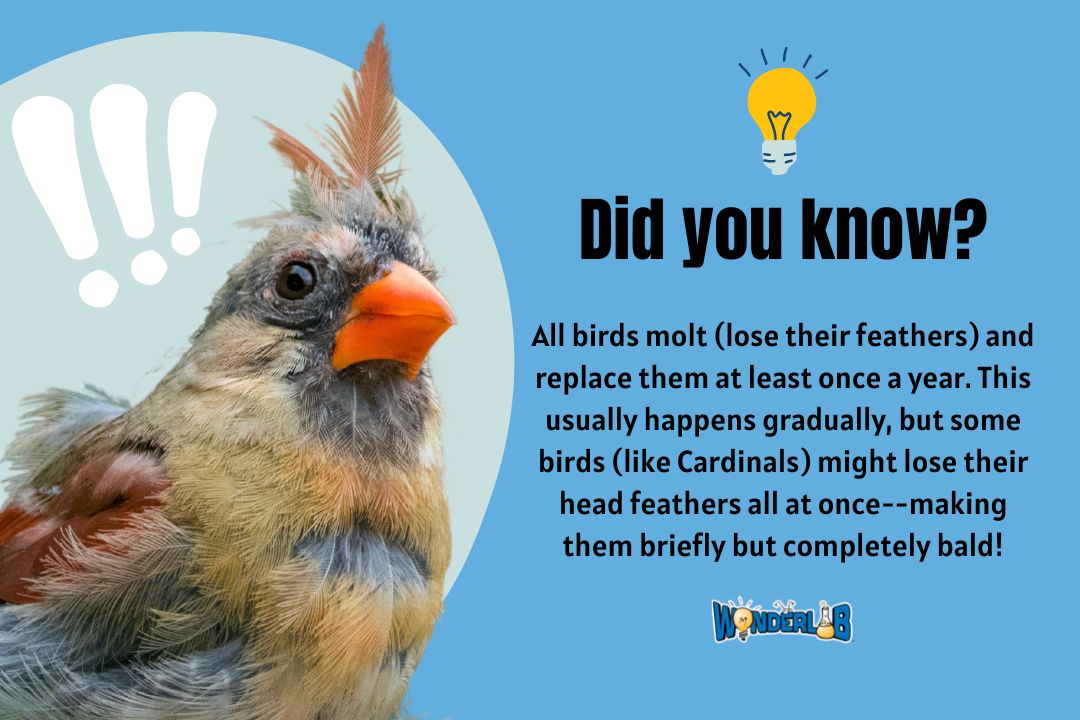
Mood Mohawk
Some birds have a cluster of feathers at the top of their heads called a crest. In many birds, the crest indicates mood or emotion. It can also be used as a signal during courtship.
Cardinals use it as a mood signal and during mating season! They raise their crest when agitated and lower it when at rest. Males and females also use it during courtship. When the male Cardinal raises his crest, it makes him appear more robust and attractive to a potential mate. Check out this video by Angry Birds to get a glimpse of Cardinal behavior.
Seed Croncher
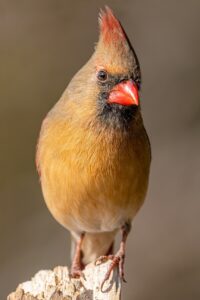
Cardinals use their beaks for cracking open seeds. Their beaks are thick and strong which give them power to crush the shells of seeds. The lower mandible (lower beak) has edges that fit into special groves in the upper mandible. The sharp lower mandible helps crack the seed. Cardinals will use their tongue to guide the seed into the special groove and then chomp down on the shell with their sharp lower mandible.
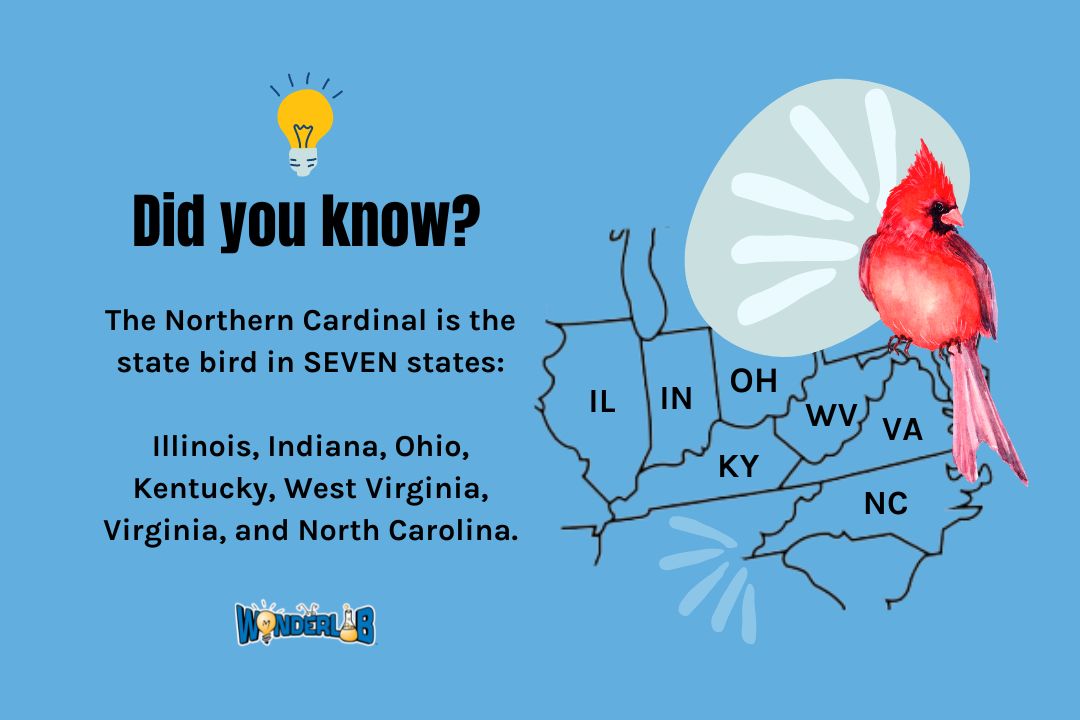
Want to bring Cardinals to your house? Try putting out their favorite foods! As you now know, Cardinals’ beaks are perfect for eating large seeds. Safflower seeds, black oil sunflower seeds, and white milo are popular choices amongst the birds. They also like crushed peanuts, cracked corn, and berries (which also help give them their vibrant color). Make sure to avoid using harmful chemicals around the food sources if you want these brilliant birds coming back all year.
 About the Author: Sam Ryan is a Development Intern at WonderLab. She grew up in central Missouri chasing roly-polies, running from mosquitos, and learning about conservation from her wildlife biologist and ornithologist (aka bird guy) dad. She’s a huge Cardinals fan… the bird, yes. The baseball team? Even more.
About the Author: Sam Ryan is a Development Intern at WonderLab. She grew up in central Missouri chasing roly-polies, running from mosquitos, and learning about conservation from her wildlife biologist and ornithologist (aka bird guy) dad. She’s a huge Cardinals fan… the bird, yes. The baseball team? Even more.
Sources:
Kanuckel, A. (2021, March 25). Why Are Cardinals So Red? Farmers’ Almanac. Accessed June 6, 2022 from https://www.farmersalmanac.com/why-are-cardinals-red-26766.
(2018, Sept. 14). The Bald Cardinal. Tennessee Valley Audubon Society. Accessed June 16, 2022 from https://tennesseevalleyaudubon.org/the-bald-cardinal/.
(2018, Nov. 3) Indiana’s Northern Cardinal: More than a Pretty Beak. Orange Bean Indiana. Accessed June 16, 2022 from https://orangebeanindiana.com/2018/11/03/northern-cardinal/6/.
(2021, Aug. 1). The Basics of Bird Migration: How, Why, and Where. All About Birds. The Cornell Lab of Ornithology. Accessed June 20, 2022 from https://www.allaboutbirds.org/news/the-basics-how-why-and-where-of-bird-migration/#:~:text=Birds%20that%20nest%20in%20the,the%20birds%20move%20south%20again.
(n.d.) Northern Cardinal. Celebrate Urban Birds. The Cornell Lab of Ornithology. Accessed June 16, 2022 from https://celebrateurbanbirds.org/learn/birds/focal-species/northern-cardinal/.
(n.d.) Northern Cardinal. Duke Farms. Accessed June 20, 2022 from https://www.dukefarms.org/siteassets/documents/making-an-impact/distance-learning-resources/bird-of-the-week—cardinal.pdf.

Leave A Comment